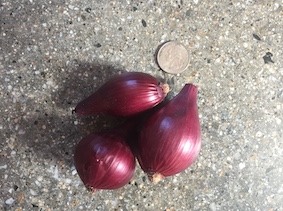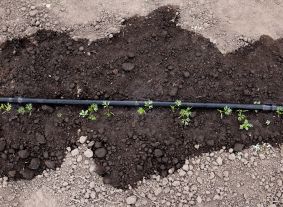Plant Onions Early in the Springtime
Views: 1039

Move over, peas: All sorts of onions are the new first crop I’m planting each spring. Old wives’ tales suggest peas should be planted on St. Patrick’s Day, but considering I’m not a huge fan of peas and the following facts I recently learned about onions, I’m definitely replacing green peas with green onions—and bulbing onions and red onions and shallots.
Onions and Daylength
The big fact I just found out about onions is that they are daylight sensitive. That means their growth and development are dependent on the amount of daylight they experience. Specifically for onions, this development is the growth of the onion bulb. Onions fall into three daylight-sensitive categories:
Long-day onions: When long-day onions experience daylight periods of 14 hours or more, their bulbs begin to form. Up until that 14-hour daytime, the onion puts its energy into creating above-ground leafy tops.
Short-day onions: Short-day onions will begin to form bulbs with as little as 10-12 hours of daylight.
Intermediate onions: These onions begin to form bulbs with an intermediate amount of daylight, 10-12 hours.
To make the best use of these daylight-sensitivity facts, keep in mind that northern regions like Minnesota, for example, experience longer daylight lengths on July 14 than a southern region like Texas does. Therefore, northern areas would do well to grow long-day onions, resulting in bigger onion bulbs. Southern states, where there isn’t as much variation in daylight lengths, would do well growing short-day onions. And those intermediate onions? They’d give you a good-sized bulbs most everywhere.
When to Plant
My last summer’s onion crop wasn’t a failure, but it didn’t produce good-sized bulbs. I know now that was a result of planting onion sets, or small leafless bulbs, in late spring. I didn’t give my aboveground foliage enough time to become big and leafy.
This year I will purchase onion seedlings of long-day onions and plant them out in my northern garden sometime between St. Patrick’s Day and the end of March, or about four to five weeks before the last frost. I’ll apply a layer of straw mulch to protect them from any lingering dips in temperature. With daylength starting to be 12 hours and greater at this time, these onions should develop some sizeable leafy tops. Once daylength hits 14 hours, the bulbs will begin to form, with their below-ground growth swelling to match their above-ground growth.
Short-day onions do have their place in northern gardens, too. A fall/early winter crop of a cold-hardy variety is something I will plant in early September. But let’s not get ahead of ourselves.
Meet Ellen Wells
When you’re raised on a farm, you can’t help but know a thing or two about gardening. Ellen Wells is our expert on edible gardening.…
Ellen's Recent Posts

Asparagus






